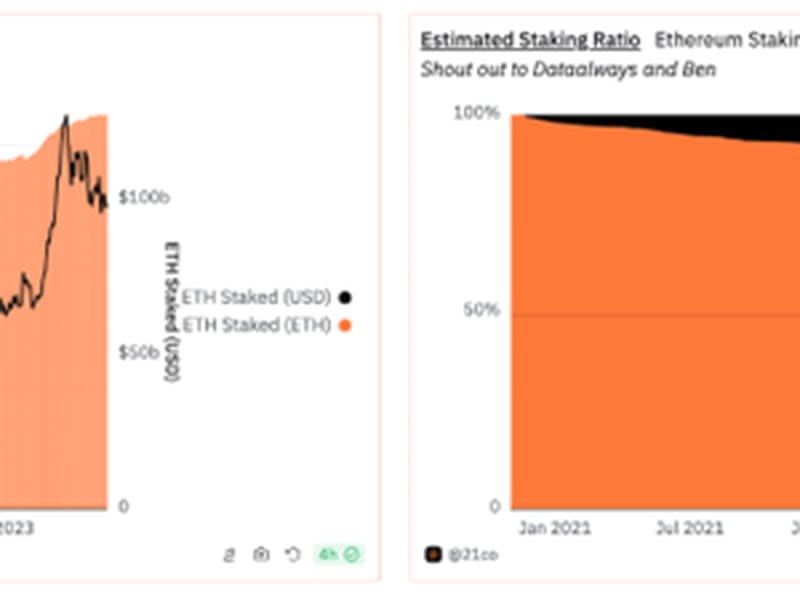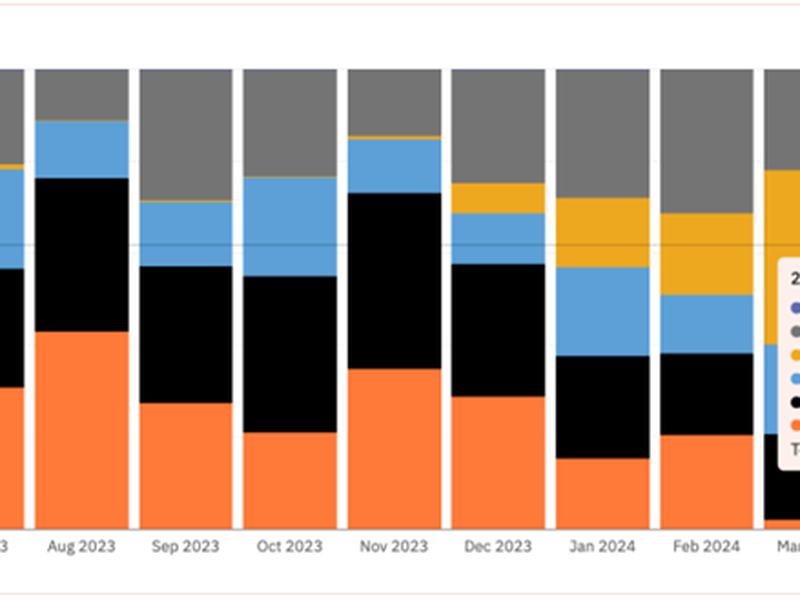The Ethereum Staking Opportunity
Ethereum is the largest proof-of-stake network by market cap. Currently, 32.5 million ($99 billion) ETH has been staked, and the amount of staked ETH has grown by 78% since Ethereum’s Shanghai Upgrade in April 2023.
Despite the impressive growth, only 27% of the ETH in circulation has been staked. Comparatively, other proof-of-stake networks such as Solana, Cardano, SUI, Avalanche and Aptos have a much higher staking ratio, between 48%-81%.
In other words, staking on Ethereum can grow larger, potentially fueled by the adoption of Liquid Staking or Liquid Restaking Tokens on Layer 2 networks and DeFi protocols.
You're reading Crypto Long & Short, our weekly newsletter featuring insights, news and analysis for the professional investor. Sign up here to get it in your inbox every Wednesday.

Source: 21co on Dune Analytics
EIP 7251 to drive more volume
The next Ethereum upgrade, Pectra, will likely take place by the end of 2024, or in early 2025. One of the key proposals, EIP 7251, can provide a better UX for validators to earn staking yield. This proposal will increase the max effective balance of validators from 32 to 2048. Leading staking service providers, like Coinbase, are managing more than 130,000 validators already. The lift in maximum effective balance allows these providers to consolidate the number of validators and ultimately increase efficiency and lower the cost of operation.
Another benefit is that solo stakers can enjoy auto-compounding their staking rewards. At the current stage, solo stakers’ staking reward will be withdrawn to the execution layer automatically. The reward received will no longer accrue staking yield. Solo stakers will need to wait until they have 32 ETH before spinning up another validator to capture the staking reward.
Restaking is the new catalyst
Restaking has been an exciting primitive on Ethereum. Together with the points program from both EigenLayer and liquid restaking protocols, it creates a new wave of demand for ETH staking. In March and April 2024, respectively, 38% and 48% of the staking volume came s from liquid staking protocols.
At the same time, over 65% ($9.7B) of EigenLayer’s TVL comes from native ETH, showing the level of traction that restaking is able to bring to Ethereum. With the maturity and adoption of restaking, we could see more staking volume comes from restaking and liquid restaking in the future.
However, it is also important to note that restaking comes with risks, such as smart contracts and the quality of the actively validated services. Given the reward and slashing mechanism of EigenLayer has not been activated, we are yet to see the full ramifications of restaking, both good and bad.

Source: 21co on Dune Analytics
Note: The views expressed in this column are those of the author and do not necessarily reflect those of CoinDesk, Inc. or its owners and affiliates.

 Yahoo Finance
Yahoo Finance 